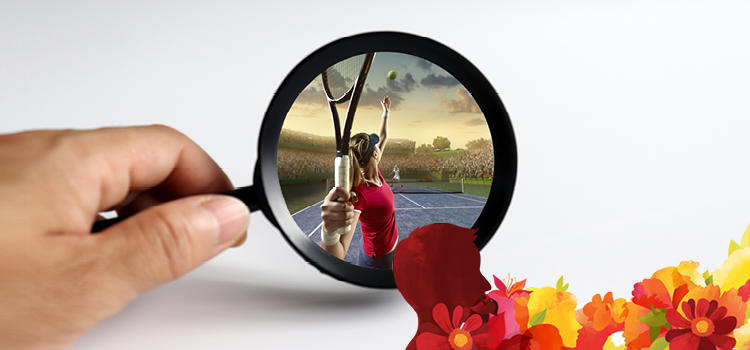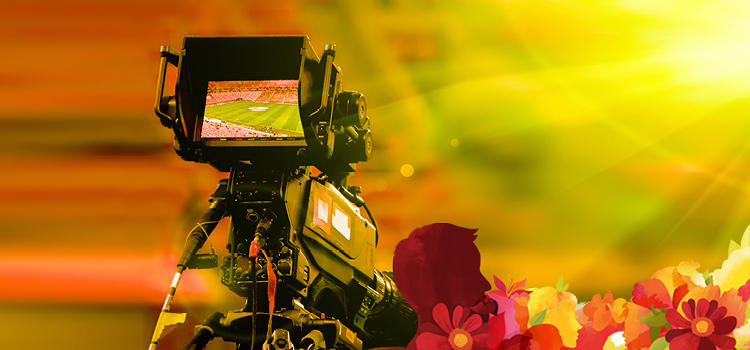
Looking at sports critically can help effect change.
Feb. 1, 2019
“When all genders are able to compete equally on the pitch, they will learn to respect and value each other’s abilities regardless of gender identity.”
This vision comes from quidditch. Yes, that quidditch. The sport played by broomstick-brandishing wizards in the Harry Potter stories and US Quidditch (USQ), an organization with a virtually unmatched commitment to equality. USQ even has an advocacy branch called "Title 9 ¾," which ensures quidditch policies promote equity and inclusivity for everyone, including transgender players. (If the name “Title 9 ¾” doesn't ring a bell, recall the train to Hogwarts, chugging off from Platform 9 ¾, and recall that Title IX is an American law combatting gender discrimination in federally funded education programs.)
What does it say about the state of gender equity in sport that one of the few examples we can find is inspired by a fictional game? In a country covered with arenas, fields and pitches, issues of gender discrimination in sport aren’t always easy to discuss.
Carly Drake is a PhD candidate in the UCalgary’s Haskayne School of Business, studying issues around gender, identity and the body in consumer culture. Dr. William Bridel, PhD, is a professor in the Faculty of Kinesiology, specializing in socio-cultural studies of sport. Both are experts in observing sports culture through critical eyes. They look at cultural assumptions in sport, such as "men are stronger than women," "women are more emotional than men," "male athletes are better than female athletes," and "good athletes look a certain way." Shedding those assumptions is easier said than done, quidditch notwithstanding.
They did not welcome men of colour or Indigenous men. Girls and women had to fight to be involved.
But the larger sports culture is gradually adapting to reflect changing values in society — including gender equity. With "gradually" being the key word.
Bridel notes that modern sport was created for boys and men. In nineteenth-century Canada, organized sport took root in the education system, and was geared toward upper-class white boys, along with sports clubs meant for those boys’ fathers and older brothers. “These were exclusive spaces,” says Bridel. “They did not welcome men of colour, for example, or Indigenous men. Girls and women had to fight to be involved.”
Because sport is historically so linked to upper-class masculinity, it also assumes a stoic and idealized athletic body that excludes many and often contradicts principles of emotional and physical health.
Both Drake and Bridel say that making sport healthier begins with awareness — the ability to step back and look at sports culture with fresh eyes. One of the reasons this is difficult is that people who participate in sport tend to love it. As Bridel tells his students, “thinking critically about sport is how you effect change. And it’s how you help other people love sport the way you do, by making it less exclusionary.”

Looking at sports critically can help effect change.
Here Bridel is getting at one of the most difficult contradictions in sport: the deeply personal, intimate relationship athletes have with their sports, versus the very public space of sporting culture. It’s a space filled with values that are highly gendered.
The sporting world is complicated. Sometimes it subverts our traditional gender expectations, and sometimes it supports them.
“The sporting world is complicated,” says Bridel. “Sometimes it subverts our traditional gender expectations, and sometimes it supports them.”
How does sport uphold traditional gender roles? Here are a few examples:
The way sports are presented in the media also perpetuates traditional gender norms. According to Bridel, many studies show that only about four per cent of media coverage goes to girls’ and women’s sports. “The exception,” says Bridel, “is the Olympics. But this coverage focuses on sports seen as traditionally appropriate for women, like gymnastics or swimming. You’re not going to see much women’s Rugby Sevens on prime-time TV.”

The media tends to uphold traditional gender views in sport.
The media can also trivialize female athletes, according to Bridel. “Just look at Simone Biles, a five-time Olympic medallist,” says Bridel. “In the media, she’s never ‘Simone Biles, Olympic great.’ Rather, she is ‘the next Michael Phelps.’ Grand Slam tennis star Serena Williams is never called the greatest tennis player of all-time; she’s the greatest women’s tennis player.” Women will struggle for authentic recognition as long as the male body is the gold standard in sport.
The idealized athletic form presents several challenges for women, athletic or not. “Typically, the exemplary physique for female athletes is taller and slim, with not a lot of curves or fat, which simply isn’t achievable for everyone,” says Drake. “This masculine-looking body also presents something of a no-win situation when women are confronted with images of, say, the Kardashians, whose bodies are quite curvy.” The ideal athletic body conflicts with the ideal social body.
Drake’s research approaches the challenges of the ideal running body through a marketing perspective. Using about 60 ads from popular running magazines, she analyzes the messages advertisements communicate about female running bodies, and she’s talked with 25 female recreational endurance runners about their reactions to the ads. Drake reflects on the norms and values that elbow their way into advertisements, shaping how we perceive women endurance runners.
A runner herself, Drake is deeply interested in how these ads contribute to a vision of the ideal female running body as masculinized — tall, slim and muscular. She notes that some of the ads do depict more feminine bodies, particularly through flowing hair or flowery tights. “Those feminine bodies are there, but they aren’t celebrated as the best athletic body.” They are often associated with a more clichéd type of “femvertising,” which uses feminist messages of equality and empowerment in a relatively superficial way, leveraging these messages to sell products without clearly attempting to effect cultural change.
The ideal, then, is still firmly in the masculine realm. “This comes from a long legacy of sport being a masculine domain,” says Drake. “And this legacy has lasting effects. If you have a feminine-looking body you know, at some level, that you need to occupy a certain space in sport — and it’s not the podium.”
Most of the ads Drake analyzes hold up an impossibly perfect physique as the ideal runner’s shape. But Drake’s study participants often spot the unrealistic nature of that physique. They resist seeing themselves as inadequate if their own bodies don’t conform to that ideal. Here’s the sort of self-talk the participants use to resist the call of the allegedly ideal body:
You know what? My body takes me where I need to go. It’s strong and not perfect but I don’t want to spend all my time at the gym and I like pizza!
“What they’re doing,” says Drake, “is building an armour to protect themselves from the ideal running body and the media that perpetuate that image. These women know the images in ads have been edited and lit in a certain way. Or maybe it’s an elite athlete who trains multiple hours a day. Women look at that and say, ‘That’s not me; that’s not my life.’”
Although sport is often mired in historic gender norms, there are plenty of reasons to be hopeful about the future of athletics. For one thing, says Bridel, our culture is beginning to loosen its definition of the male athlete. “We still hear about boys in sports like figure skating being bullied, but overall we are seeing more challenges to dominant ideas of masculinity. There is some evidence suggesting that non-traditional men’s sports are more accepted now, but of course there remains much more work to be done.”
But there also remain too many stories about homophobia, transphobia, and misogyny in sport culture.
Positive stories surface in the LGBTQ arena as well. “There are more openly gay and lesbian athletes now, thanks to more open conversations in the context of sport, and there is more media coverage of ‘out’ athletes," says Bridel. "But there also remain too many stories about homophobia, transphobia, and misogyny in sport culture.”
In addition, women’s sports receive more equal funding today than in the past, says Bridel. And those sports are producing female role models who push back on gender norms. “We’re lucky to have people like bobsledder Kaillie Humphries and Hayley Wickenheiser, from the national hockey team, who are unapologetically competitive and athletic.”
As male and female athletes resist traditional gender roles, the sporting world continues its zig-zagging path to equality.
Along that path, pain is likely to get in the way of healthy participation in sports. “We tend to connect the ability to silently endure pain with the masculine ideal,” says Bridel. "Men often don’t talk about health so pain is not discussed.”
Sport tends to normalize the silence around pain. “You’re meant to sacrifice your body for the sake of the game,” says Bridel. “Your body is a machine.”
This ‘play at all costs’ mentality is different for women, according to Drake. Serious female runners are depicted as stoic in advertisements, while those shown in recreational settings are allowed to show emotion. “We’re supposed to grin and bear it,” she says. “Otherwise we risk being labeled as trivial, weak, or worse — hysterical.”
Bridel notes that stoicism in sport has many layers. “It’s okay to complain about the pain — or even to brag about it — as long as you’re playing valiantly through the pain.” This masculine stoicism can also be linked to the use of painkillers to keep training or playing.
A former Ironman triathlete, Bridel recalls that when he was competing, he thought he was the healthiest he’d ever been. “But I was plagued with injuries, I was underweight, I got sick easily and was always tired.” But he simply kept on running.
Given the myriad ways sport upholds and tears down traditional gender norms, and the way athletics creates problematic body ideals, is sport a healthy way to promote gender equity?
There is room for hope — and that spirit of hopefulness extends well beyond the quidditch pitch. Bridel points to the students in his class on gender and sexuality in sport. “They can be somewhat resistant to the conversations at first. But I see a lot of ‘aha’ moments.”
Bridel feels fortunate to be teaching a course that gets students thinking critically about sports culture. The course delves into contemporary topics, like the exclusion of trans athletes in some areas of sport, and Bridel feels the course contributes to a healthier sports environment. “When my students go out into the field, hopefully they’ll be more aware of what they as individuals can do to address inequality.”
– – – – –
Participate in a research study
Dr. William Bridel, PhD, is an assistant professor at the University of Calgary’s Faculty of Kinesiology. His research explores socio-cultural aspects of the body, physical activity, and health. Read more about William
Carly Drake is a PhD candidate in the University of Calgary’s Haskayne School of Business. She studies issues around gender, identity and the body in consumer culture. Read more about Carly